Results
-
 £47.50
£47.50Error Detection - Student's Edition
The Error Detection: Exercises for the Instrumental Conductor texts are designed to improve the critical listening skills of the conducting student through real music excerpts that contain planted errors in the parts for the conductor to find. Both books contain 54 excerpts from standard band literature from grades 2 to grade 6 so students gain knowledge of real music they can use later, not just non-musical etudes. The teacher's edition contains over 350 pages of materials with analysis sheets and answer keys to help the conducting teacher to easily evaluate the student's progress. The teacher's edition also comes with a CD-ROM containing all of the instrumental parts for allof the musical excerpts as PDF files, so the teacher can just print the amount of parts needed for each example, and the examples are arranged to sound satisfying with as little as five players. The Error Detection program has been tested for over 3 years at major university programs like the University of Minnesota, Illinois State University, and the College-Conservatory of Music at the University of Cincinnati.
Estimated dispatch 7-14 working days
-
 £84.99
£84.99Twinkling Flutes - Richard Comello
Composer Richard Comello observed that there is practically no music written for two flutes accompanied by concert band, so he composed this delightful piece convinced that this it will fill this little gap in the repertoire. Following a solemn baroque style introduction, joyful characteristic flute sounds develop with subtle band accompaniment. The two flute parts can be played by more players so enabling this piece to put your complete flute section in the spotlight.
Estimated dispatch 7-14 working days
-
£69.99
Get on Board - Stephen Bulla
Stephen Bulla strikes gold again with this accessible but jazzy Trombone section feature. There is plenty of rhythmic fun for everyone while the trombones get that important time out front. The old spiritual "The Gospel Train" lends itself beautifully to a swing-jazz treatment and if there's anyone who knows how to bring the jazz idiom to the concert band setting it's Stephen Bulla. If you prefer, two Trombone soloists can be featured while the rest of the section plays along on the Euphonium part. Your band will want to do this one again and again, and so will you, so Get On Board!
Estimated dispatch 7-14 working days
-
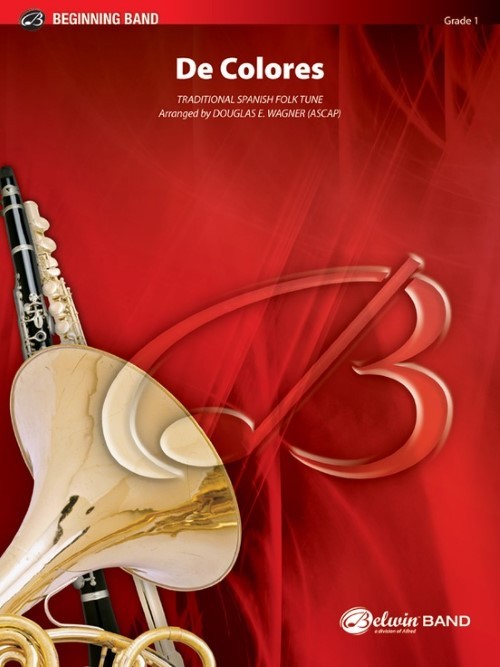 £54.95
£54.95De Colores (Concert Band - Score and Parts) - Wagner, Douglas E.
With charming old world style, this traditional Spanish folk tune, cast in three-quarter time, will be a delightfully colourful addition to your beginning band concert, so much so that the title literally translated means of colours. This charismatic tune will be warmly received.Duration: 2:15
Estimated dispatch 7-14 working days
-
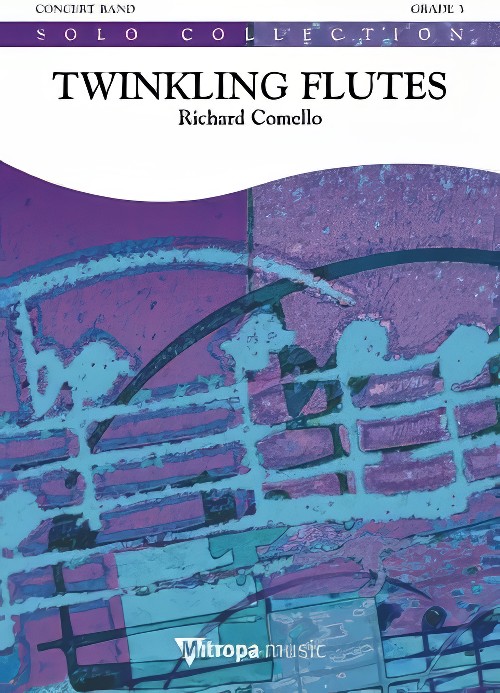 £84.99
£84.99Twinkling Flutes (Flute Duet with Concert Band - Score and Parts) - Comello, Richard
Composer Richard Comello observed that there is practically no music written for two flutes accompanied by concert band, so he composed this delightful piece convinced that this it will fill this little gap in the repertoire. Following a solemn baroque style introduction, joyful characteristic flute sounds develop with subtle band accompaniment. The two flute parts can be played by more players so enabling this piece to put your complete flute section in the spotlight.Duration: 3:30
Estimated dispatch 7-14 working days
-
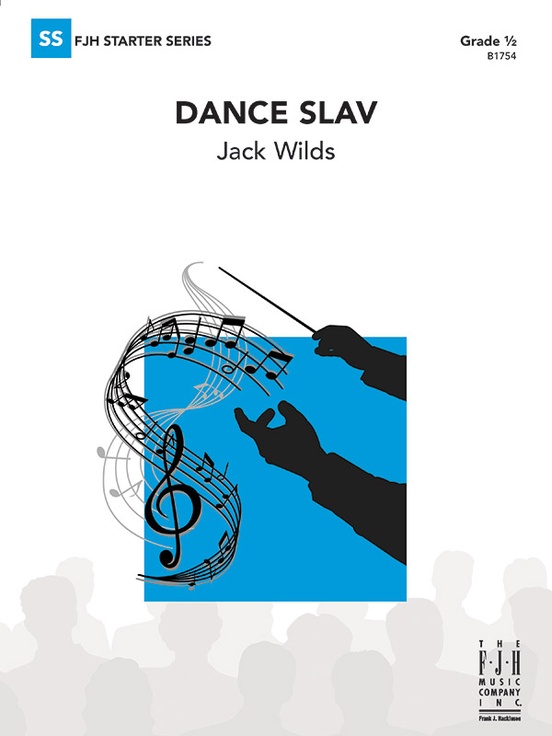 £53.95
£53.95Dance Slav - Jack Wilds
Inspired by late 19th and early 20th century dance pieces, this energetic and spirited work uses only six notes yet sounds like so much more! The notes and rhythms will fall into place quickly so you and your beginning students can focus on a variety of dynamics and articulations. The optional accelerando at the end adds excitement as the piece comes to an energetic conclusion. (1:20)
Estimated dispatch 3-5 working days
-
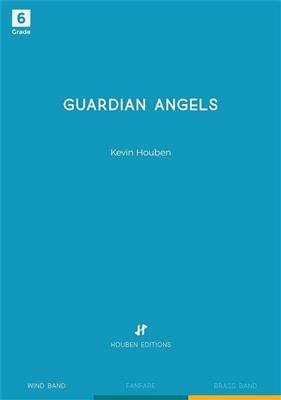 £159.99
£159.99Guardian Angels - Kevin Houben
Guardian Angels gives a musical expression to the legend of Reverend Louis Henri Bhler referring to the use of Psalm 34.North-west Veluwe and in particular Oldebroek (The Netherlands) has a very rich religious tradition which is demonstrated by its monumental churches. They tell the story of a stirring history in which Reverend Bhler played a crucial role. Inspired by his arrival as a pastor in 1870 in the neighbouring Oosterwolde, two big religious communities came into existence with their characteristic churches but this rivalry also resulted in great social unrest.This composition reflects on this striking personality and in particular on the story of the Angel Guard.'One evening Reverend Bhler has given a sermon in Oldebroek and he walks over the Church path through the pastures to Oosterwolde. On this dark and stormy evening Bhler's opponents are waiting for the pastor in ambush. They want to drown him in a watercourse near the Church path but abandon their plan because Bhler is accompanied by two men. The next day it comes to an encounter between Bhler and his opponents. They repent their, fortunately unexecuted , plan. Bhler firmly believes that on the previous night he walked alone over the Church path, and was not accompanied by two men. It was concluded that it must have been the angels who had protected Bhler.'Psalm 34 is central to this composition and this because of its powerful melody but also because the lyrics of verse 4 of the rhymed version fit in well with the special legend of Reverend Bhler:The Lord's angel gathered round himAn invincible heavenly guard,Who tries God's will, around himSo he's well guard(ed)A second melodious and harmonic cell is a musical transformation of the name 'Bhler'. This cell is varied in major and minor third chords and sometimes used as the main idea or apotheosis, but also serves as an accompanying cell or as a bridge between other melodic and rhythmic constructions.The composition was made possible by contributions of: Mr Evert van de Poll, owner of the Van Gelder Groep, Het Prins Bernhard Cultuurfonds Gelderland en Het Feteris Oosterbaan Fonds.
Estimated dispatch 7-14 working days
-
 £99.99
£99.99March of the Robot Army - Philip Sparke
March of the Robot Army was commissioned by Linda Anzolin & Giordano-Bruno Tedeschi for Campobanda 2019, with funds made available by JUST ITALIA. Campobanda is an Italian summer music camp for 8- to 18-year-olds (held in Camposilvano in 2019) which has a different theme every year. The theme for 2019 was 'science fiction', so composer Philip Sparke chose to write a robot march. After a quirky introduction featuring trumpet calls and chromatic figures, the main theme appears in a minor mode on clarinet and tenor sax and is then taken up by the full band. A change of key heralds a new theme, led by the trumpet and again repeated by the full ensemble. A further change of key introduces a legato 'trio' melody over a rather robotic accompaniment: instruments are added bit by bit until a climax is reached. Small motifs from the introduction then lead back to a full recapitulation, revisiting the first two themes in new guises before finishing the march with a flourish.
Estimated dispatch 7-14 working days
-
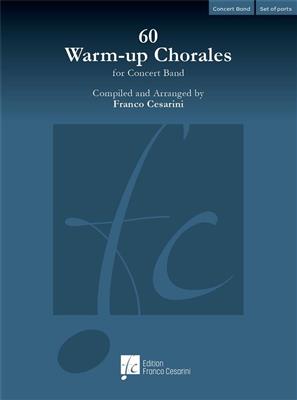 £163.00
£163.0060 Warm-up Chorales for Concert Band
During his experience as a band conductor and teacher of wind orchestra conducting at university, Franco Cesarini has dealt with the topic of warm-ups very frequently. Throughout these long years of conducting he has had the opportunity to try many existing methods, evaluating their advantages and disadvantages.After a long time, he has decided to compile a collection of chorales for warm-ups, which are organized according to the criteria that he considers most effective.While working on his60 Warm-up Chorales for Concert Band, Franco Cesarini has always borne in mind that amateur musicians play for pleasure.He feels that it is extremely important that they have satisfaction at every moment of the rehearsal and not to start the rehearsal with needless "punishing" exercises. Nobody is really motivated to start playing with scales, long notes, or tricky rhythmical exercises. There is often a distinguished absentee in band rehearsals, namely music itself!Although this publication does not foresee a specific tempo for the chorales, they should often be performed rather slowly but without dragging.Dynamics are not indicated, so that the conductor has the opportunity to draw the attention of the musicians to his gestures and to make them react according to his indications.Timpani and bell parts have been added with the aim of not leaving the percussionists completely inactive during the warm-up phase, but can also be omitted.The chorales are written in four parts (SATB) and are also playable in smaller groups. The four voices can be played in different combinations of woodwinds or brass quartets or in mixed combinations.The collection includes ten chorales for the following keys: D flat major, A flat major, E flat major, B flat major, F major and C major.With his 60 Warm-up Chorales Franco Cesarini would like to convey the message to play the chorales in a musical way, thus raising the musicians' awareness of phrasing, the right interpretation of cadences, rubato and agogic.Above all, never do anything without putting the musical aspect in the foreground. 60 Warm-up Chorales for Concert Band: A perfect collection to warm-up and improve tuning of a concert band!
Estimated dispatch 7-14 working days
-
 £79.99
£79.99Commemoration - James Barnes
Commemoration was commissioned by the members of the Northwest North Carolina Bandmasters Association to recognize the distinguished career of Dr. William A. Gora, the longtime Director of Bands at Appalachian State University, who passed away in 2015. Bill was loved by his students, respected by his peers and cherised by his many friends. A brilliant musician, a fine conductor and a warm human being with a marvelous sense of humor, Bill has been sorely missed by all. Gora was friends with composer James Barnes for over 40 years. They met when Barnes was still in graduate school at Kansas and Gora had just finished his DMA at the University of Florida. When the NNCBDA asked Barnes to compose a work in Bill's honor, he was honored to do so. He decided to write a cheerful work for Bill, full of energy, color and melody, because he knew this is what he would have wanted; no funeral dirges for Bill Gora. The soft middle portion of the work, a hymn-like tune scored in saxophone choir, was included because Bill was a fine saxophonist and, for many years, the saxophone teacher at ASU.
Estimated dispatch 7-14 working days
